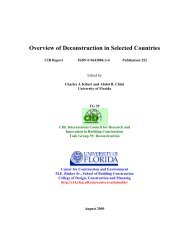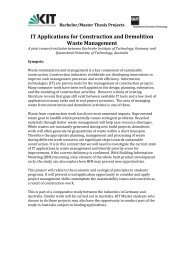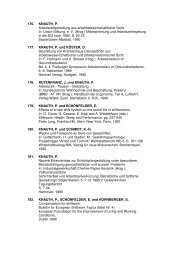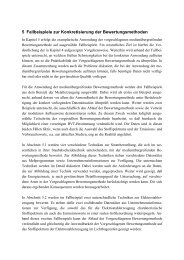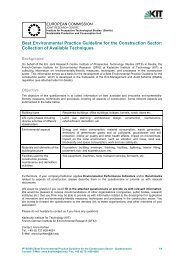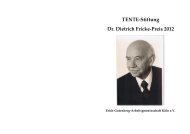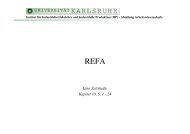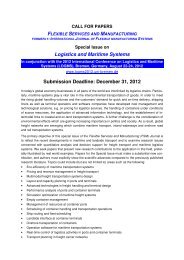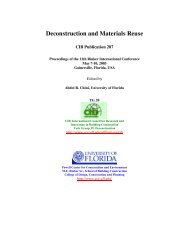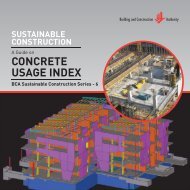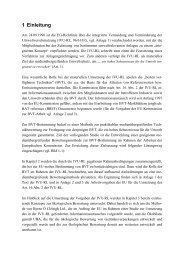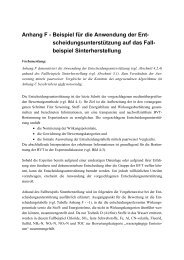Waste reduction final report -4 - Test Input
Waste reduction final report -4 - Test Input
Waste reduction final report -4 - Test Input
Create successful ePaper yourself
Turn your PDF publications into a flip-book with our unique Google optimized e-Paper software.
Table 1: Construction expenditures in 2008 as to type of work and type and category of<br />
construction in Mio CHF [FSO 2009a].<br />
Type and category<br />
of construction<br />
New constructions<br />
Reconstruction,<br />
enlargement,<br />
demolition<br />
Public maintenance<br />
activities<br />
Investments 2008 Investments 2008 Investments 2008<br />
in Mio.<br />
in Mio.<br />
in Mio.<br />
Fr.<br />
Fr.<br />
Fr.<br />
Change<br />
to prior<br />
year in<br />
%<br />
Change to<br />
prior year<br />
in %<br />
Out of the total of 53,426 Mio CHF, new construction holds most expenditure with 61%,<br />
especially in house building (66% of all construction activities). Public maintenance activities<br />
account for only 8%. Expenses in new traffic and communication constructions are expected<br />
to decrease in support of reconstruction, enlargement and demolition since the national grid is<br />
more or less planned and finished. This fact can be confirmed with the increase of 14% of<br />
investments in reconstruction, enlargement and demolition of traffic and communication<br />
constructions. Public maintenance activities don’t cost much because only small activities<br />
such as new coating or snow clearance are included in this category. About 2/3 of the<br />
investments are made by private awarding authorities, the other 1/3 by public awarding<br />
authorities (calculated for normed figures to the year 2000). This fact is important to know<br />
which stakeholders are influencing which sectors most.<br />
Flows and stocks<br />
This section describes general volume stocks in house building. Existing networks and<br />
constructions were compiled for civil engineering. After that, flows and stocks are<br />
concretized for different materials.<br />
Change to<br />
prior year in<br />
%<br />
Total 32,474 3.9% 16,791 3.6% 4,161 8.1%<br />
Total civil engineering 5,730 7.7% 4,186 11.5% 2,717 12.1%<br />
Traffic and<br />
4,470 8.0% 2,963 14.0% - -<br />
communication<br />
Residual civil<br />
engineering<br />
1,260 6.7% 1,223 5.9% - -<br />
Total house building 26,744 3.1% 12,605 1.2% 1,443 1.3%<br />
Residential building 18,757 1.6% 5,227 3.0% - -<br />
Industry, business,<br />
services<br />
Residual house<br />
building<br />
5,095 12.3% 3,901 -6.1 - -<br />
2,892 -1.1% 3,477 7.9 - -<br />
Stocks in constructions<br />
In 2007, there were 168 t of construction materials stocked per habitant. As we will see in the<br />
next chapter, the construction period has a great influence on the type of materials<br />
incorporated and therefore for waste management. The following figure shows the inventory<br />
volume in Mm3 of Swiss buildings in different time periods. Please note that data represent<br />
the whole building volume, including not only materials but also room volume. The periods<br />
81



